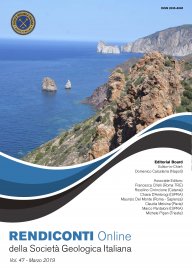
Hydrogeological and hydrogeochemical monitoring in the Cumae archaeological site (Phlegraean Fields, southern Italy)
Vincenzo Allocca (1), Silvio Coda (1), Pantaleone De Vita (1), Brunella Di Rienzo (4), Luciano Ferrara (2), Antonella Giarra (2), Olga Mangoni (3), Luisa Stellato (4), Marco Trifuoggi (2) & Michele Arienzo (1)
(1) Dipartimento di Scienze della Terra, dell'Ambiente e delle Risorse, Università degli Studi di Napoli Federico II, Complesso Universitario di Monte S. Angelo, via
Cintia, 80126 Naples, Italy.
(2) Dipartimento di Scienze Chimiche, Università degli Studi di Napoli Federico II, Complesso Universitario di Monte S. Angelo, via Cintia, 80126 Naples, Italy.
(3) Dipartimento di Biologia, Università degli Studi di Napoli Federico II, Complesso Universitario di Monte S. Angelo, Via Cintia, 80126 Naples, Italy.
(4) Centre for Isotopic Research on Cultural and Environmental Heritage (CIRCE), Dipartimento di Matematica e Fisica, Università degli Studi della Campania
Luigi Vanvitelli, Caserta, Italy.
Corresponding author e-mail: vincenzo.allocca@unina.it
Abstract
Keywords
Get Full Text